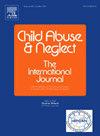Positive childhood experiences support emotional and behavioral health in middle childhood: Longitudinal mediation of adverse childhood experiences
IF 3.4
2区 心理学
Q1 FAMILY STUDIES
引用次数: 0
Abstract
Background
Fostering positive childhood experiences (PCEs) is a key prevention strategy, however there is a scarcity of longitudinal studies that explore the role of PCEs with childhood outcomes.
Objective
This study examined the impact of middle childhood PCEs in the presence of earlier adverse childhood experiences (ACEs) on indices of behavioral and emotional development.
Participants and setting
1163 participants from the U.S. Early Head Start Research and Evaluation Project (EHSRE).
Methods
Ten PCEs indicators (PCE-G5) that align with the Health Outcomes from Positive Experiences (HOPE) framework were identified in the Grade 5 EHSRE data. The convergent validity of the PCE-G5 for internalizing, externalizing, and social problems was tested with hierarchical linear regressions, controlling for infant/toddler ACEs (ACE-IT). We also examined whether PCE-G5 mediated the association between ACE-IT and internalizing, externalizing, and social problems using path analyses.
Results
Children had 7.6 PCEs, on average. PCE-G5 scores were associated with fewer internalizing (β = −1.000, p < 0.001), externalizing (β = −1.183, p < 0.001), and social problems (β = −0.420, p < 0.001). PCE-G5 partially mediated the effect of ACE-IT on internalizing, externalizing, and social problems (respective indirect effects β = 0.027; β = 0.028; β = 0.037; all p < 0.001).
Conclusions
Our study adds evidence of an inverse association between PCEs and middle childhood behavioral and emotional problems. The mediating impact of PCEs suggests that the exposure to early childhood ACEs may reduce the opportunities for involvement in PCEs, thereby increasing the risks for internalizing behavior, externalizing behavior, and social problems. Findings highlight the benefit of opportunities for PCEs for children who have been exposed to ACEs.
积极的童年经历支持童年中期的情绪和行为健康:童年不良经历的纵向中介
培养积极的童年经历(pce)是一项关键的预防策略,然而,探索pce在童年结局中的作用的纵向研究却很缺乏。目的探讨童年早期不良经历对儿童行为和情感发展指标的影响。参与者和环境来自美国早期开端研究与评估项目(EHSRE)的1163名参与者。方法在EHSRE 5级数据中确定与积极体验健康结果(HOPE)框架一致的10个pce指标(PCE-G5)。采用层次线性回归检验PCE-G5对内化、外化和社会问题的收敛效度,控制婴幼儿ACE-IT。我们还通过路径分析检验了PCE-G5是否介导了ACE-IT与内在化、外在化和社会问题之间的关联。结果患儿平均有7.6个pce。PCE-G5评分与内化较少相关(β = - 1.000, p <;0.001),外化(β = - 1.183, p <;0.001),社会问题(β = - 0.420, p <;0.001)。PCE-G5部分介导ACE-IT对内在化、外在化和社会问题的影响(各自的间接效应β = 0.027;β = 0.028;β = 0.037;所有p <;0.001)。结论我们的研究增加了pce与儿童中期行为和情绪问题负相关的证据。儿童早期不良经历的中介作用表明,儿童早期不良经历的暴露可能会减少儿童参与不良经历的机会,从而增加内化行为、外化行为和社会问题的风险。研究结果强调了对接触过ace的儿童进行pce的机会的好处。
本文章由计算机程序翻译,如有差异,请以英文原文为准。
求助全文
约1分钟内获得全文
求助全文
来源期刊

Child Abuse & Neglect
Multiple-
CiteScore
7.40
自引率
10.40%
发文量
397
期刊介绍:
Official Publication of the International Society for Prevention of Child Abuse and Neglect. Child Abuse & Neglect The International Journal, provides an international, multidisciplinary forum on all aspects of child abuse and neglect, with special emphasis on prevention and treatment; the scope extends further to all those aspects of life which either favor or hinder child development. While contributions will primarily be from the fields of psychology, psychiatry, social work, medicine, nursing, law enforcement, legislature, education, and anthropology, the Journal encourages the concerned lay individual and child-oriented advocate organizations to contribute.
 求助内容:
求助内容: 应助结果提醒方式:
应助结果提醒方式:


